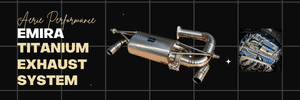Your tire PSI will change from when you first drive the car after it has been sitting overnight to when you drive it around and the tires heat up. They can actually change a lot depending on the road surface and ambient temps. When tracking your car, you want to be in the ideal PSI range to maximize your contact patch and grip. Overinflated tires mean less contact patch. Underinflated tires mean you're using too much of the outer edge of the tire (or even beyond in extreme corners) and it won't be as stiff as it's supposed to be. In racing conditions teams will purposely change tire pressures to manage grip/wear, understeer/oversteer, etc. It matters in the margins unless you are grossly off.
Lotus tells us what cold tire pressure to aim for, but not what hot tire pressure to aim for. This is less important for the street, but still impacts handling and tire wear over time.
Most cars don't have active PSI monitors so you don't know what PSI your tires are. You just know if they are too low (TPMS) or not. You have to physically get out of your car after a few hot laps and measure the PSI, then adjust. In the Emira it updates real time! so it's convenient to know and adjust accordingly.







